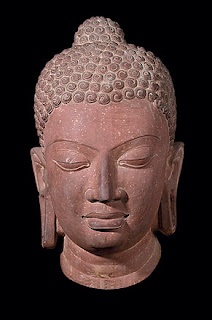 Chandra Gupta the First was the responsible man for this event.
Chandra Gupta the First was the responsible man for this event.The Gupta Era is now known to be the golden saga of the classic Indian history. Also this period is famous for its beautiful architectures and paintings. For example the many wall-paintings in the cave of Ajanta are one of the most precious piece of the Indian arts some of which were created in the forth century AD. Elephanta temple is the place where you can see the big stone statue of the three-headed god Shiva. Every temple build and carved in the Gupta period can be identified by their hall and tower.
Writing in the Gupta age was centered around the religion, lyric and historical poetry. One of the most decorated writers of that period was Kalidasa. Also the famous Kamasutra was written in the golden age. Mathematicians also took historical step during the age of Gupta, like the greatest mathematician of India - Aryabhatta.
Today only several monuments from the Gupta age were able to survive. Some examples of the golden Indian age architecture is preserved in the temple of Tigawa and in the temple at Deogarhnear, respectively build in 415 and 510 AD. Some of the remaining ruins of Gupta architectures can be found in Bhita (Pradesh State) but most of them are in ruins.
The Gupta period was one of the most successive age of the Indian history. It sets the base for the period of “Greater India” which was the time when Indian culture started to influence the surrounding countries.







